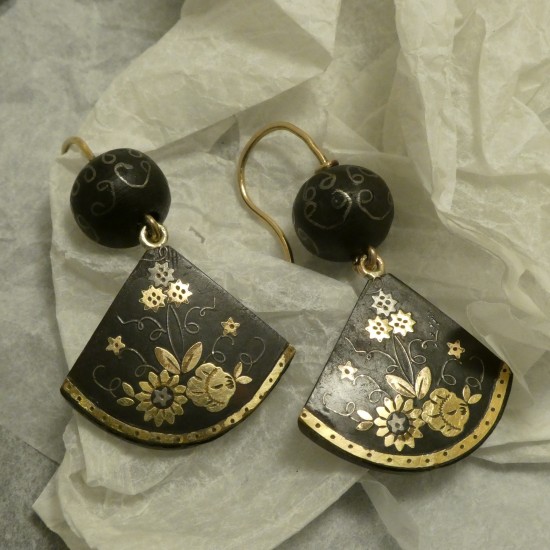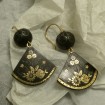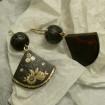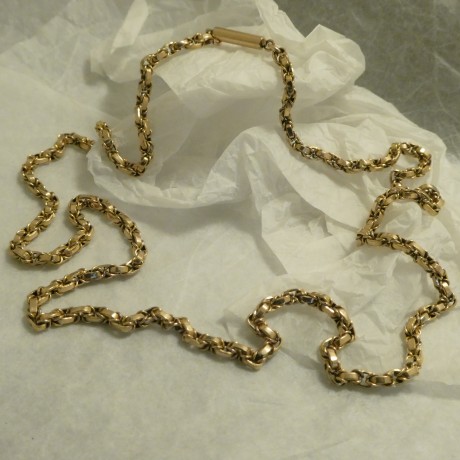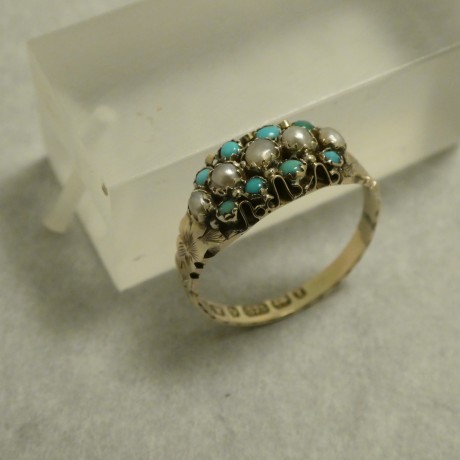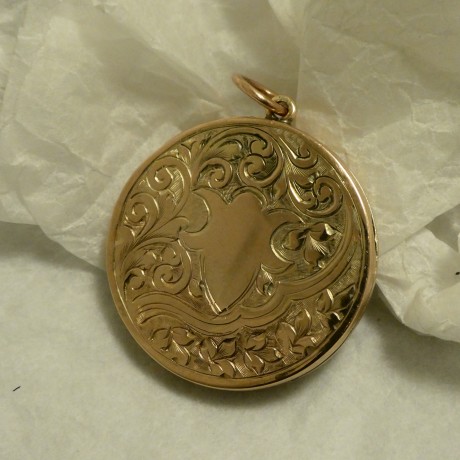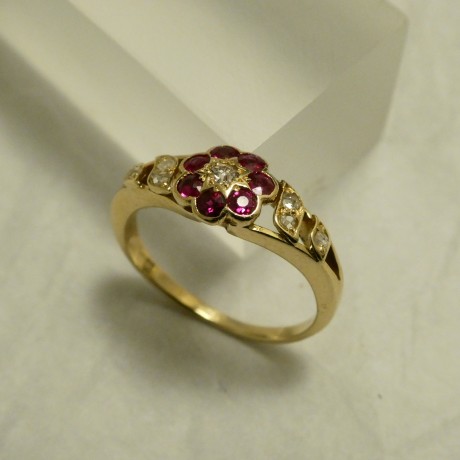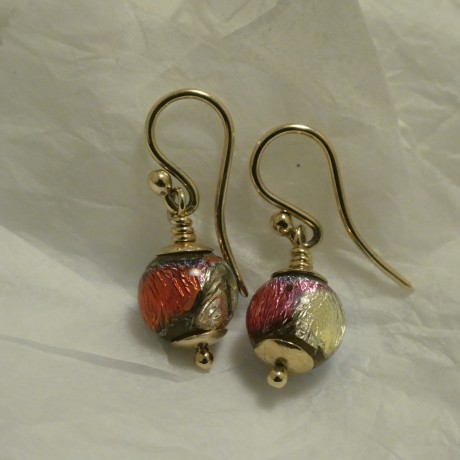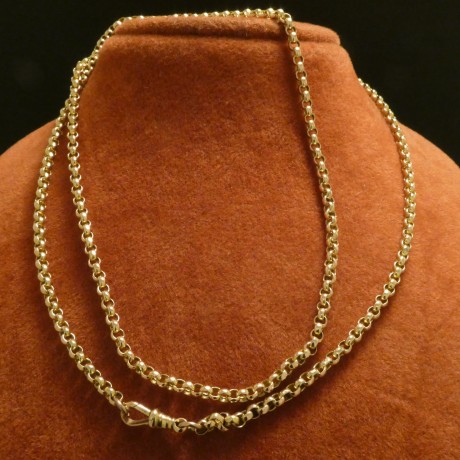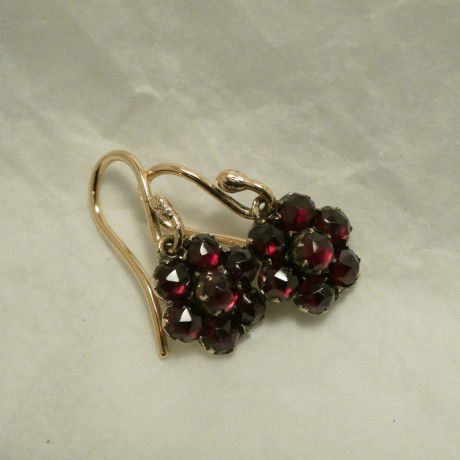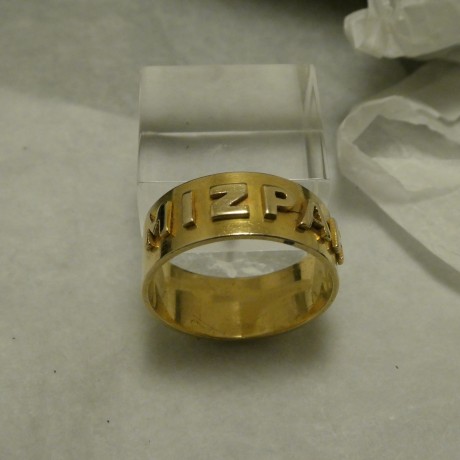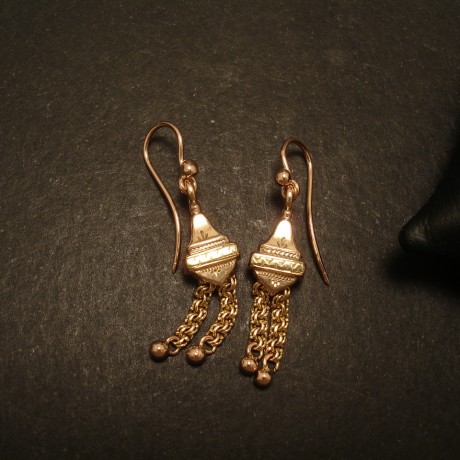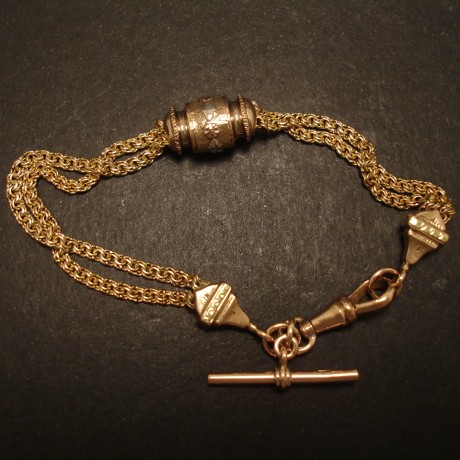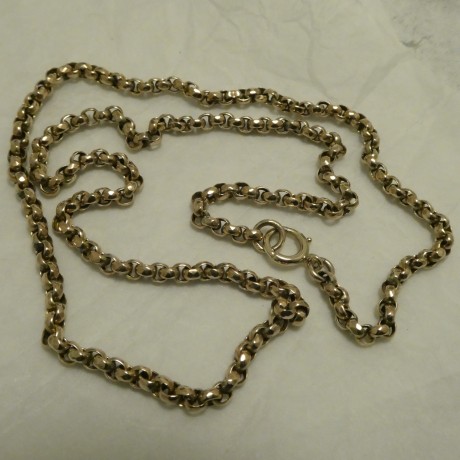1860s English Pique Earrings. Pique` (pronounced pee/kay) is a French word meaning included or inserted, and in the context of the above 1860s English Pique earrings refers to the inlaying of small pieces of Gold and Silver, in a decorative manner, in tortoise shell. The French mastered the art of inlaying in tortoise shell in the 1700s, and pique work began to be produced in England, principally in London, in the early 1800s. Fantastically shaped eardrops and pendants were being created, often quite large in size, for tortoise shell is a quite light organic material.
Up to the 1870s all pique work was created by hand, and the designs were often fluid and ornate, but after the 1870s most of the form work was done by machine, and the designs became more structured and geometrical, and the actual pique work, the inlaying of small segments of Gold and Silver, became more schematic, simpler, less gorgeously decorative, until by the late 1880s, pique jewellery was being almost mass produced; the fashion simply ran out of steam, and pique jewellery ceased being produced. It has never been produced since, and never will be again, for the skill and labour required to produce a pair of earrings such as the above is beyond the market and has been for a very long time.
Imagine the work involved in inlaying the superfine gold filaments of tendrils spiralling about the flowers of these lovely eardrops.
1860s English Pique Earrings
$1,150.00
1860s English Pique earrings, showcasing the art of inlaying tortoise shell with segments of Gold and Silver to create a decorative design.
9ct Gold earhooks; 40mm total eardrop length, 21mm across at widest.
Tortoise shell being an organic material light in weight, these eardrops are very light, easy to wear.
See below for a little history on these rare, unusual and beautiful earrings.

